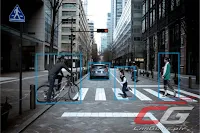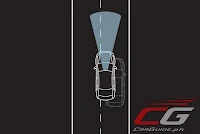Admittedly, safety isn’t sexy. If the surveys are right, then safety actually ranks below criteria such as aesthetics, performance, and even resale value when it comes to a new car purchase. However, that’s not to say carmakers aren’t doing anything about it; one carmaker, Subaru, has made safety a core principle in the design and engineering of their cars. They’re so focused on safety that they said they’ll be able to achieve the highest vehicle safety standards in the world until 2025 at the very least.
Future-proofing their vehicles’ safety doesn’t come cheap. The Japanese carmaker hinged their future on a one-billion-dollar investment on a new platform they dubbed the Subaru Global Platform or SGP. But even before they migrate each and every of their models onto this new set of underpinnings, the company has already started sowing the seeds prior to that.
Subaru’s core technology, the horizontally-opposed “boxer” engine and symmetrical all-wheel drive do sound great from a performance standpoint, but these weren’t put in the Forester or Outback simply because it allowed owners to live their World Rally fantasies. They are there because of Subaru’s conscious effort to maintain the highest level of driver confidence which equates to safety in almost every conceivable road and weather condition.
That’s now joined by EyeSight, a unique driver assistive technology which will become standard in Subaru vehicles in the same way as all-wheel drive and the boxer engine have become.
Jointly developed with Hitachi, EyeSight differs from any other driver assistive technology in the market because instead of using relatively expensive technology such as LIDAR and millimeter wave radar, it uses a pair of color cameras giving it stereopsis or stereoscopic vision which allows it to perceive depth just like the human eye. Additionally, its placement—mounted inside the car on the upper edge of the windshield—reduces the potential for damage that could occur in bumper-mounted systems.
Unlike the human eye though, EyeSight doesn’t get tired or distracted by a 20-foot tall billboard of Maine Mendoza. The video information relayed by the cameras is unwaveringly processed by the EyeSight computer, identifying things like other vehicles, obstacles, and traffic lanes. And unlike LIDAR which isn’t reliable in detecting pedestrians and cyclists, EyeSight can recognize them. It can even detect when the vehicle in front taps his brakes. The information is then relayed to the braking system and electronic throttle control, enabling EyeSight to mitigate or avoid a collision (including bringing the car to a complete stop) if the driver doesn’t take action.
The EyeSight system also integrates adaptive cruise control, pre-collision braking, and vehicle lane sway and departure warning.
At relative speeds under 50 km/h, EyeSight’s Pre-Collision Braking System can detect vehicles in the car’s path and, if the driver has not applied the brake, the system can do so to slow the vehicle or bring it to a full stop to help avoid the potential collision. And even when the driver does apply the brakes, the system is pre-boosted to help the vehicle stop sooner. Pre-Collision Braking is always on in the background to act as a second set of eyes for the driver. It can also be turned off temporarily for off-road or rough road travel.
Lane sway and departure warning monitors traffic lane markers and lines and can detect if the car begins to wander outside the intended lane without a turn signal being used, or begins to sway within the travel lane. Using the turn signal cancels the warning.
Adaptive Cruise Control is intended for highway use and can maintain a safe distance from the vehicle in front, braking or accelerating the car to maintain the driver-selected target speed and traveling distance. Adaptive Cruise Control operates from 0 to 180 km/h and can fully bring the vehicle to a stop if the system “locks on” to a vehicle ahead. As an added convenience, Adaptive Cruise Control assists the driver in “stop and go” traffic by maintaining distance from the vehicle ahead.
Other features of EyeSight include Pre-Collision Throttle Management which warns the driver and suppresses the engine output to prevent accidents caused by pedal misapplication when it detects an obstacle in front and the gear is wrongly selected (Drive instead of Reverse); Lead Vehicle Start Assist which alerts the driver to take action when it senses that traffic has started moving again at a stop (good for distracted drivers); and even a “black box” function. The last one, though not advertised by Subaru records the images made by the stereo cameras before and after the collision as well as vehicle information such as steering angle, engine speed, accelerator opening, brakes, and shift state) into the vehicle’s ECU. Although the data acquired cannot be viewed like a dashcam, Subaru does sell EyeSight compatible drive recorders, at least in Japan.
The first version of EyeSight was released in 1999 which was then known then as advanced Active Drive Assist. It’s seen incremental upgrades since then culminating in the current version which was the first one launched globally in 2014. This version offers 40 percent more range and takes 15 percent smaller space. Ver.3 is said to be in the works and should bring Subaru squarely into the self-driving game. It’s said to offer Level 2 autonomy (single-lane acceleration and steering capabilities) and will be released for the Japanese market real soon.
Of course, that’s not to say that EyeSight is perfect. Because it uses image-based cameras, its limitations are almost the same to the human eye. It’s not guaranteed to work during the night time and it can also be affected by weather such as heavy rain or intense sunlight. It may also have difficulty in processing things like plain walls, fences, and non-standard shaped vehicles. Even with the advanced technology used, nothing replaces a driver who’s always paying attention.
Still, it’s considered as one of the most affordable and effective driver assistive technologies available in the market today. Widely praised by safety experts and customers, it’s recommended by 90 percent of EyeSight-equipped Subaru owners and more than half say the system has helped them avoid an accident. Currently, EyeSight is equipped in more than a million Subaru vehicles globally with ASEAN markets such as the Philippines finally getting it in the first quarter of this year.
















All the design can be done using 3D laser scanner Denver, Colorado. It is new way for faster and more accurate to use. You can use to find the fault of your design.
ReplyDelete